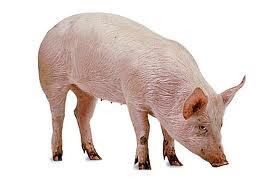
More freedom of movement for Danish pigs
A new research project will develop a new trail system for farrowing and lactating sows. The new trail system will mean both more freedom of movement of pigs while giving farmers a number of manufacturing advantages.
Virtually all lakes in Denmark is in boxes for 28 days, while the danger and give suck. This is done to reduce the risk that they put themselves in their neonates. Now, however, researchers shorten the lakes stay in the box for just 3-5 days after which they are released: - Studies show that it is the first 3-5 days after birth, there is a significant risk that kids come in caught under the sow and die. If sows are loose in this period, it actually increased piglet mortality of 1-2 piglets per litter. It is therefore important for the survival of the offspring, the sow lies in the box at the very first critical days after parturition. But then the kids' senses and energy resource has become so much better that they are far better care of themselves, says Associate Professor Christian Fink Hansen, coordinator of the Master of Animal Science at the Faculty of Life Sciences at University of Copenhagen.
